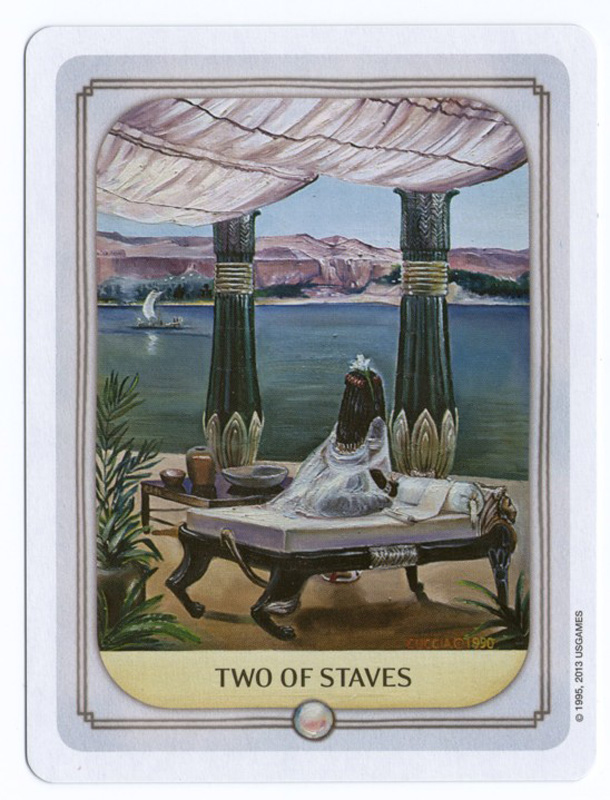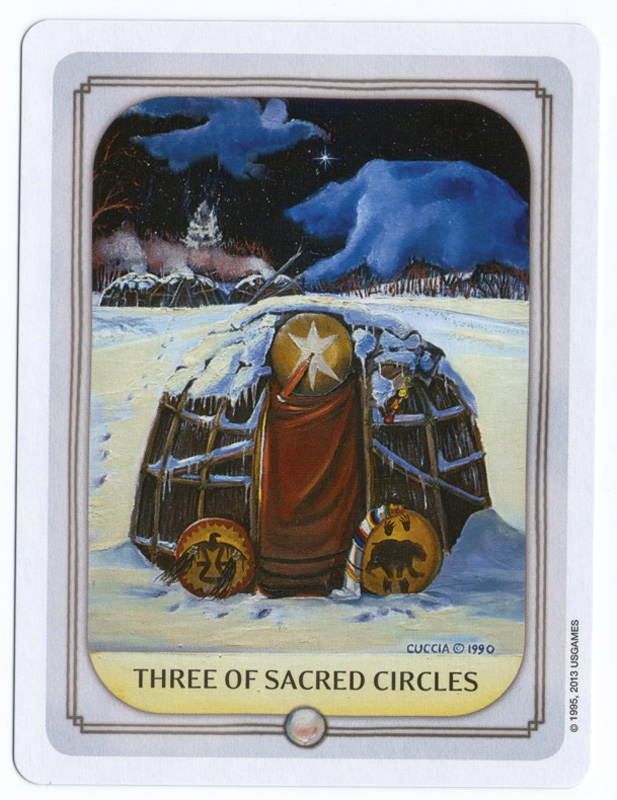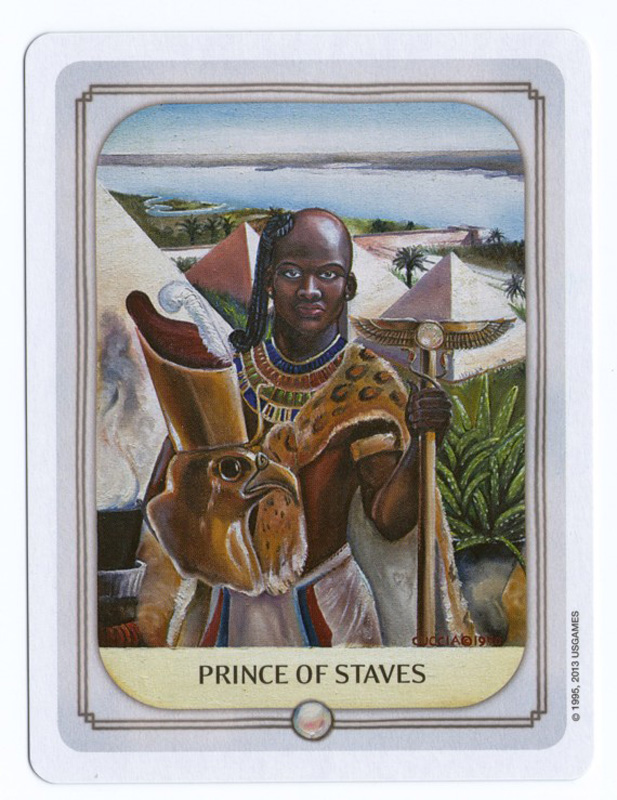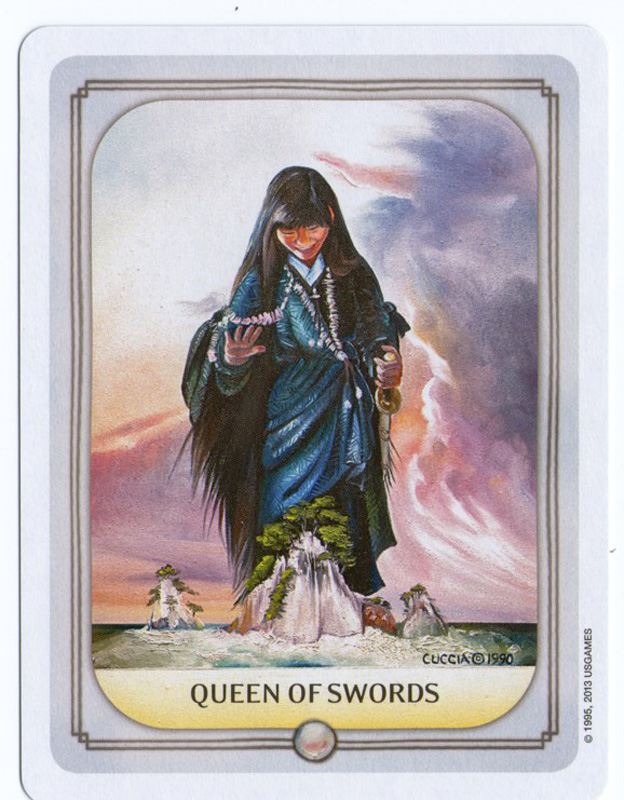
The Ancestral Path Tarot is a beautiful and fulfilling deck that manages to interweave traditional tarot with a fabric of diverse cultural traditions. The concept of the Ancestral Path is based on the commonalities of human experience as they are reflected in contrasting cultures over a broad range of ages in human experience. This deck beautifully fulfills this theme in stunning artwork, rich in intuitive imagery.
The Ancestral Path Tarot follows the traditional tarot deck structure and naming conventions, although Sacred Circles appear in place of the suit of coins. Justice appears in position eight of the Major Arcana, with Strength at number twelve. Each of the four suits is represented by a specific culture and time period. Staves are represented by the Egyptian 19th dynasty of Ramses II. Cups are represented by Arthurian Britain. Swords are represented by feudal Japan. The Sacred Circles are represented by post-contact Native Americans.

The Major Arcana cards draw from each of these traditions, and in some cases blend more than one into a single card, as well as incorporating a few modern-day images. (None of the cultures appearing in the suits would have had familiarity with the image of earth from space that appears in the World card!)
The LWB describes the cultural backgrounds for each of the suits in a bit more detail. However, unless one is already knowledgeable in each of these cultural traditions, the LWB is essential to decoding some of the author’s intended meanings. The various card meanings given in the LWB describe both positive and negative aspects for most cards, with the negative aspects being described as “alternative” meanings. Although experienced readers have the latitude to sift the alternative meanings to upright versus reversed or ill-dignified placements in accordance with their reading style, it may seem confusing and contradictory to those new to the Tarot.
The court cards use specific mythical characters from each of the four traditions, which raise some challenges. Court card meanings reflect the attributes of their mythic representatives, which often depart noticeably from traditional tarot roles. As an example, the King of Staves, represented by the Egyptian deity Osiris, is described as representing judgment, law, regulations, critical evaluations and other legal-related matters. These attributes are typically associated with the King of Swords in traditional card meanings. Although the author has done a nice job of relating the court card personalities to their respective luminaries, the non-traditional assignment of attributes could be confusing for readers who are not familiar with the traditions behind each specific character.

As with the court cards, some of the described meanings and card images in the pip cards depart a bit from the familiar Rider-Waite-Smith traditions. Again, the LWB is needed to sort these out. Even then, some of the images did not evoke, for me, the described meaning, but that may simply be a reflection of my ignorance in the various traditions.

The images presented in each card are in many cases credible works of art unto themselves. Many have magnificent landscapes which bring a sense of place to the card. Each card has a rather large gray border, which I found intrusive. Given the quality of the art in this deck, it would have been quite striking to present the images at maximum size, unframed.
The cards have a matte finish which I find easier to handle than many gloss-finished decks. The framed blue card backs show an orb with mirrored images of a tableau of human figures appearing to be participating in a rite or celebration of the sun (when upright) and moon (when reversed).
The LWB includes instruction for a Celtic Cross Spread. In trying a reading, the cards read well. I expected to find the mix of cultures among different cards to be discordant and obtrusive, but it was not. The cultural themes worked well together. In fact the various traditions flowed well through the story of the reading, triggering reflection upon the diversity of one’s own past influences.
Although I would not recommend the Ancestral Path Tarot as a first deck for a beginner, it is a very approachable deck. It is comfortable to work with, yet easily awakens new perspectives. When you work with this deck, go deeply into the magnificent images, letting the artwork tell the story in its beautifully evocative way.
~review by Nancy Waterstone
(previously published in the ATA Quarterly Journal, summer 2013 issue)
Creator: Julie Cuccia-Watts
U.S. Games Systems, Inc. 2013,
tuck box with 78 cards and LWB instruction book, $20.00
(reprint of 1996 edition that was sold with the deck and paperback book in a slip cover)
